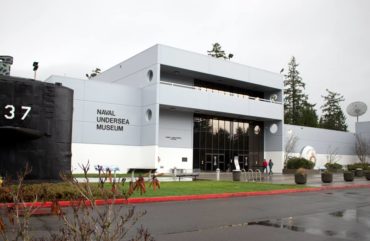 It’s one of Kitsap County’s best-kept secrets — a treasure hidden in plain view.
It’s one of Kitsap County’s best-kept secrets — a treasure hidden in plain view.
The Naval Undersea Museum in Keyport is a trove of artifacts, history and hands-on experiences that tell the stories of the U. S. Navy’s undersea operations.
And it’s all free.
According to operations director Olivia Wilson, the museum is one of 10 Navy museums in the continental United States (the Puget Sound Navy Museum in Bremerton is a sister museum). Each museum has its own area of specialization.
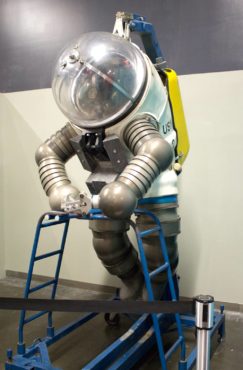
The Keyport museum’s focus, as the name says, is on underwater activities and includes a large, comprehensive collection of artifacts related to submarines, unmanned underwater vehicles (UUVs), torpedoes, mines, technology, and diving and salvage equipment. Currently, there’s even an eye-catching exhibit about the Navy’s trained dolphins and sea lions that carry out search missions all over the world.
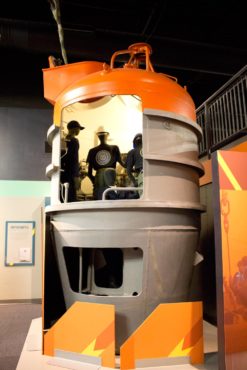
Outdoor Exhibits
The collection of underwater objects starts in the parking lot, where two rescue submarines, the Mystic and the Trieste II, are on display. The Mystic, technically called a deep-sea rescue vehicle or DSRV, was one of two such undersea vehicles active from the 1970s to 2008 that provided rapid-response rescue capability for survivors of submarine accidents anywhere in the world.
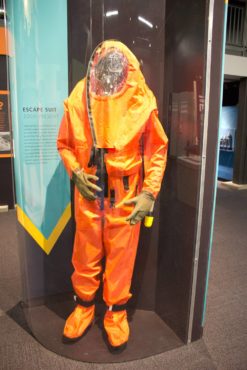
The Mystic and its sister ship, Avalon, were built after the USS Thresher tragedy of 1963. According to the Submarine Force Museum, the Thresher, not even two years old, was “a lead boat in a new class of nuclear-powered, fast-attack submarines.” During a deep-diving test off the coast of Cape Cod, Massachusetts, the submarine did not return to the surface, and the crew of 129 including 17 civilians died.
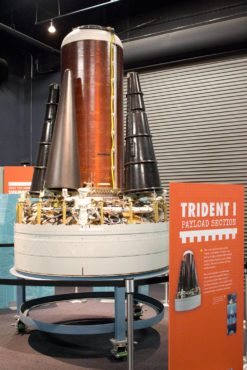
“When the Thresher accident happened, the Navy had no way of rescuing survivors of a submarine accident,” museum curator Mary Ryan said. “The Mystic and the Avalon were built for that very purpose.”
Both DSRVs could go to the site of a submarine accident, “mate” with the damaged sub to rescue sailors and then carry them to safety, she said. Nowadays, DSRVs are remotely operated and run on batteries or fuel cells, and are more versatile in rescue operations.
“But even though the Mystic and the Avalon are retired, they’re still two of the most technologically advanced submersibles in the world,” Ryan said.
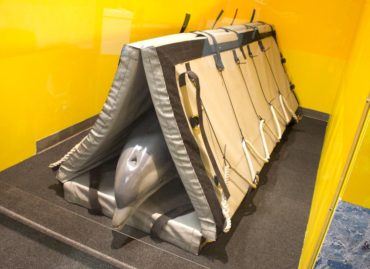
The Trieste II (DS I) was the first deep-submergence vehicle built by the Navy. It could operate at a depth of 20,000 feet and was used for undersea research and other tasks, including studying the remains of the USS Scorpion that sank in 1969.
According to the Naval Undersea Museum’s website, the Trieste made national news as recently as 2012 when the CIA released information about its use in a 1972 secret mission to retrieve a lost spy-satellite film capsule from 16,400 feet.
The big, black object on the lawn near the museum’s entrance is the sail of the USS Sturgeon (SSN 637). The Sturgeon, another Cold War relic, was one of several Submarine Force ships that conducted surveillance and reconnaissance missions. When the Sturgeon was decommissioned in 1994 at the Navy Shipyard in Bremerton, her sail was given to the museum.
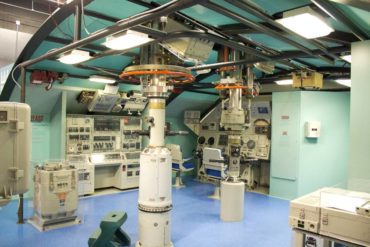
Also on display outside the museum is a Sealab end bell from the 1960s.
“One of the reasons we have such a great collection is because so many Navy ships are dismantled in Bremerton, so we get many of the parts,” Ryan said. “If it’s a Navy thing that has to do with anything under sea, it’s probably here.”
Indoor Exhibits
Step through the museum’s doors and you’ll find several large gallery spaces filled with historic objects and informative displays. There’s also a well-stocked gift shop and special areas where kids can attend classes, do experiments and make things.
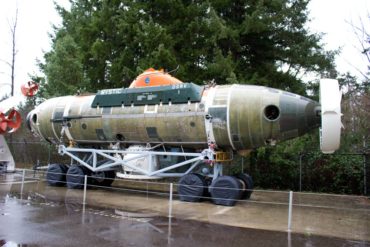
One of the most popular permanent exhibits is a large replica of the control room from the USS Greenling (SSN 614), a “fast-attack” submarine that, like other fast-attack subs, carried nuclear weapons and was responsible for hunting and spying on America’s enemies during the Cold War.
The control room contains the equipment that steers the sub, fires its weapons and plots the sub’s position and course, among other tasks. Visitors can sit at several hands-on control panels, just like the Greenling’s crew did. The only difference is that in the museum’s control room, all the stations are spread out into a much larger space than in the actual sub.
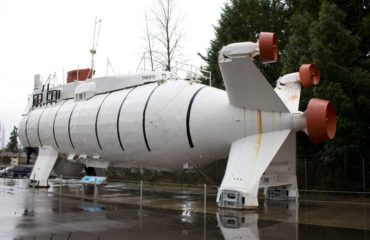
Visitors can also look through the Greenling’s periscope to see what’s going on outside the museum.
“Some folks even spot their cars out in the parking lot when they look through the periscope,” Ryan said with a smile.
Another permanent exhibit, the Ocean Environment, explores the world that lies beneath the sea and tells about things like buoyancy, pressure, density, heat, light, sound, salinity and oxygen. There are numerous opportunities to interact with the displays as visitors learn how the Navy works in the unique and challenging undersea environment.
Yet another exhibit displays the museum’s collection of torpedoes.
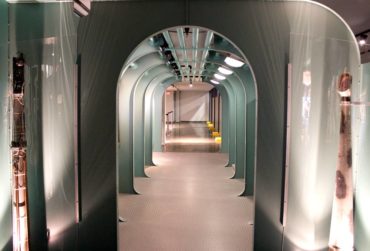
“It’s the most comprehensive display of torpedoes in the entire United States,” Ryan said. “We have more than 140 torpedoes that date from the 1890s to today.”
That includes two of the very first torpedoes developed — a Howell and a Whitehead — as well as modern versions like the Mark 48 ADCAP and Mark 50. There are even a couple of “cut-aways” showing what the inside of a torpedo looks like.
A display of Navy mines tells the story of mine warfare from the Revolutionary War through modern times. Because submarines played an important role in World War II, especially in the Pacific where they sank 30 percent of the Japanese navy’s ships and nearly 5 million tons of Japanese shipping, there’s also a large display of WW II submarine artifacts including several battle flags and a cut-away of a sub from the era.
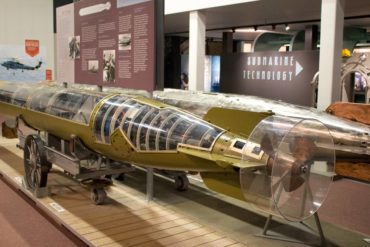
Today, U.S. nuclear subs are used for strategic deterrence.
“The objective is never to need to use them until all other defense measures have failed,” Ryan said. The payload section of a Trident I training model is a reminder of that.
Newest Exhibit — Marine Mammals
The museum tries to create new, temporary exhibits every couple of years. Usually these focus on specialized subjects. The newest describes how the Navy’s trained dolphins and sea lions carry out missions throughout the world.
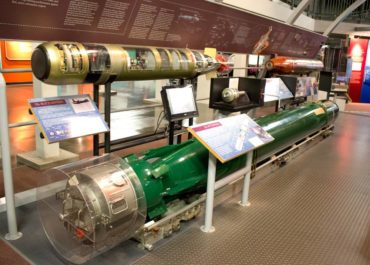
Marine mammals are great at finding mines and other objects underwater — in a fraction of the time it would take a human, Ryan said. They can also help with recovery or removal of underwater objects.
When a trained dolphin finds a mine, for instance, the animal sets down a small marker nearby, but never actually touches the mine. Then when the animals surface, they touch a little paddle on the search boat. Touching the front paddle means, “I found something”; touching the back paddle means, “I didn’t find anything.”
“It takes five or six years to train dolphins for this work,” Ryan said. “And it takes even longer for sea lions. But the work they do is absolutely amazing.”
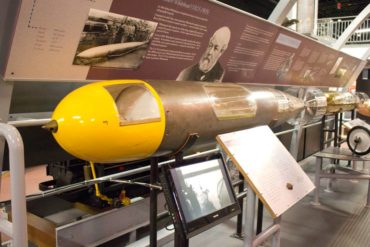
Like, for instance, the time when dolphins found the tail and mid sections of a torpedo that was lost from the USS Iowa in 1899. Or the time they found an old Howell torpedo in a training area off San Diego, California, that had been underwater for several decades. “At first, the trainers didn’t believe the dolphins. But then they sent down a couple more dolphin and they found the torpedo too,” Ryan said.
Educational Programs
In addition to all the exhibits, the museum also offers a variety of educational opportunities — both on-site and off-site — for all ages.
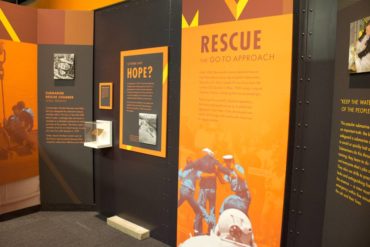
On-site programs include Science Saturdays that take place the first Saturday of each month from September through May (excluding November and December). Science Saturdays are drop-in classes scheduled from 10 a.m. to 2 p.m. They’re geared to elementary and middle school children and their adult caregivers, according to education specialist Valerie Johnson, but any ages can attend.
“These are STEM-based programs that are designed to hold the interest of kids and adults alike,” Johnson said. (STEM stands for science, technology, engineering and math.) “We do things like make periscopes out of card stock and mirrors, or test the buoyancy of foil boats, or work with robotics.”
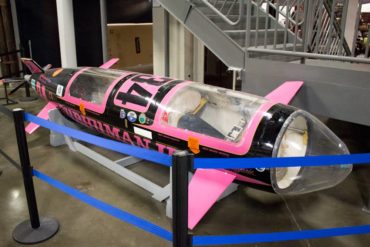
The robotics sessions might use prebuilt units that are then programmed, or pieces that students put together to create a robot — or even just the materials needed to build a robot from scratch.
During the summer, the museum hosts STEAM programs every Wednesday morning, with a new topic every week. (The A in STEAM stands for art). “These are still science- and technology-based, but we add some more creative elements like art materials,” Johnson said.
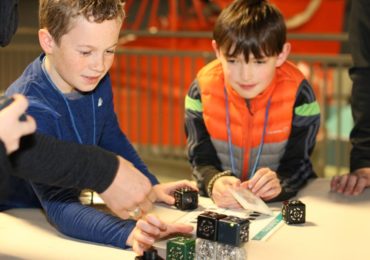
Johnson also takes STEM- and STEAM-type programs to schools, community groups, homeschool groups and even groups of retirees, as requested. Like museum admission, all the classes are free.

“That’s one of the best, most amazing things about the museum,” operations manager Wilson said. “Because the museum is owned by the Navy, it’s all supported with taxpayer dollars, and free to everyone who wants to come.”
“And there’s so much to see and do here,” added curator Ryan,” that most people like to come back again and again.”





























